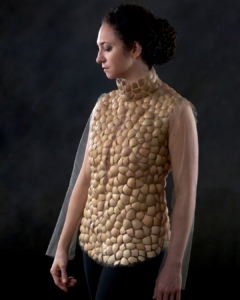
Erika Diamond explores the fragility and resilience of the human body using materials that echo the properties of skin. Born to ballet dancers, Diamond creates
Last month, artist Shaheen Rahman led two Turkish paper marbling, or ebru, workshops at HCCC, teaching participants how to create one-of-a-kind works of art on
Ato Ribeiro translates symbolic modes of communication from across the African diaspora, shifting traditionally textile-based expressions into complex, geometric wooden tapestries. His interlocking patterns reference
“Open Door Interviews” is an informal interview series developed in collaboration with HCCC and social media intern James Pickens, intended to give insight into our
“Open Door Interviews” is an informal interview series developed in collaboration with HCCC and social media intern James Pickens, intended to give insight into our
“Open Door Interviews” is an informal interview series developed in collaboration with HCCC and social media intern James Pickens, intended to give insight into our
HCCC recently interviewed current resident Carl Johnson, who works in the medium of fiber arts and specializes in weaving with thin-gauge metal. Make sure to
Marketing Specialist Mary Karcher recently interviewed Abi Ogle about her experience as a resident artist at HCCC. Abi’s residency runs through February, 2020. For more
In the fall of 2019, HCCC curatorial intern Felicia Leyva interviewed recent HCCC resident artist Maxwell Mustardo about his experimentation with surface texture and volumetric
HCCC curatorial intern Grace Winburne interviewed Texas ceramist and recent HCCC resident artist Audrey LeGalley about her creation of household objects in porcelain to
Houston Center for Contemporary Craft is located in the Houston Museum District, two blocks south of Highway 59, near Rosedale St. Visitors should park in the free parking lot located directly behind the building, off Rosedale and Travis Streets, and enter through the back entrance.
Houston Center for Contemporary Craft is located in the Houston Museum District, two blocks south of Highway 59, near Rosedale St. Visitors should park in the free parking lot located directly behind the building, off Rosedale and Travis Streets, and enter through the back entrance.
Privacy Policy | HCCC is a 501(c)(3) nonprofit organization, EIN 76-0621817. Donations are tax-deductible. ©2024. All rights reserved.